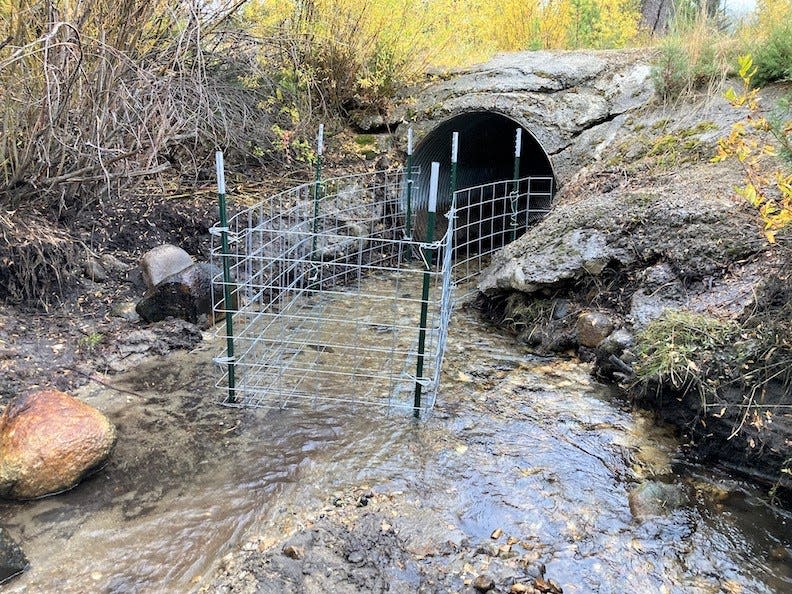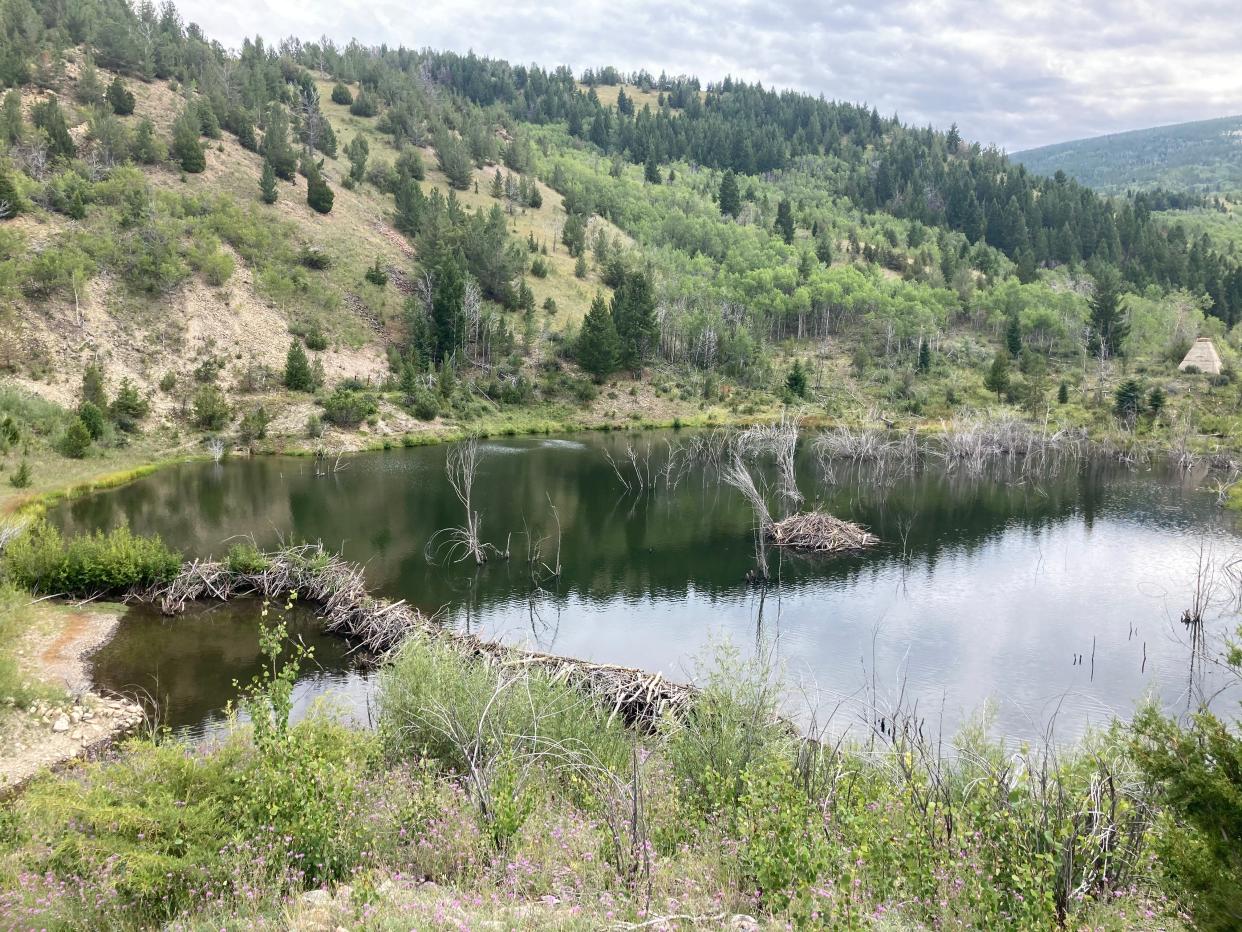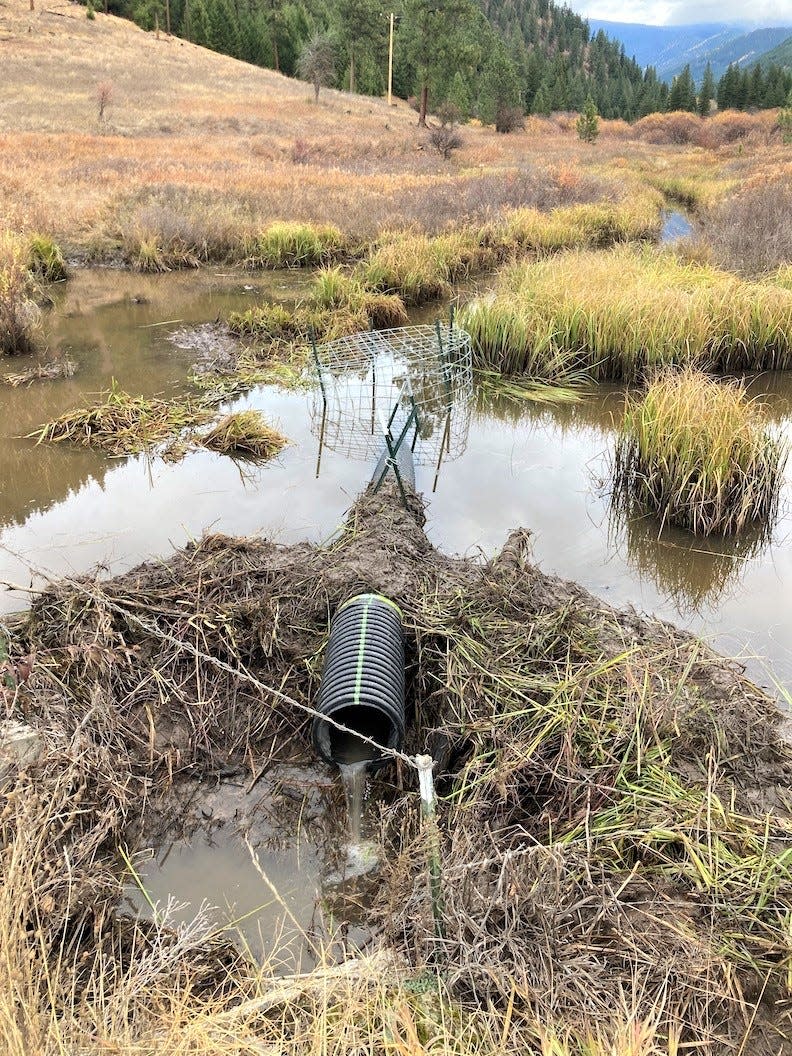New program to please both landowners and beavers aimed to launch in central Montana
Living with beavers can either be a joy to behold or an enormous pain in the posterior. Peaceful vegetarians with a strong family structure, beavers are best known as nature’s engineers. No other animal apart from man so significantly alters its habitat to suit its own needs.
Watching the progress a colony of beavers makes building dams, lodges, and canals – or hearing the slap of a beaver’s tail on a pond’s surface to warn of intruders can evoke wonderment and delight. It can also signal a significant problem when beavers block culverts and ditches, cause roads and railways to wash over, flood fields, and topple trees.
For the past five years a “Beaver Conflict Resolution Project” organized through the Clark Fork Coalition and other environmental protection organizations have launched a successful program to address landowner concerns while keeping beavers on the landscape to improve wildlife habitat and water conservation across northwest Montana.
That same program will likely arrive in central Montana soon, offering landowners a cost-share opportunity to keep beavers from damaging local property, yet keeping them alive and active in the streams and wetlands they once populated 150 years ago.
“I help landowners live with beavers,” said Ellisa Chotte, Beaver Conflict Specialist for the Clark Fork Coalition. “That can be addressing tree cutting conflicts by wrapping trees with fencing and helping landowners with plugged culverts. We can put exclusion fencing on them to keep beavers from damming. The idea is to keep the beavers far enough away from that pull and sound of flowing water and take away that damming stimuli.”
“When we started this project in 2019 these devices had been installed over in Massachusetts and Vermont, but nobody had done them on a widescale here in Montana,” Chotte continued. “We didn’t know how they were going to work in our watersheds. Landowners are happy, the beavers are happy, and FWP is getting fewer calls.”
While the Clark Fork Coalition’s help is always available, part of the effort has been to give landowners the information they need to construct simple, low-cost beaver diversion projects on their own. In most cases the designs and materials are simple; heavy gauge “deer-fence” wire mesh wrapped with some space around a tree trunk will keep the beavers away while giving the tree a chance to grow without strangling it.
Similar box-like structures around culverts and irrigation ditches can dissuade beavers from building dams around them. The projects are simple to build and typically cost in the range of a few hundred dollars for materials.

While not available in Cascade County yet, the Clark Fork Coalition’s program offers cost sharing opportunities for landowners who want the keep the beavers but lose the headaches they can cause.
“It’s landowner dependent,” Chotte said. “What they use their land for, their own personal goals, do they like beavers, do they want them to stay. If the answer is yes, then we can go in and help.”
The program covers the tech’s time and travel, and the landowner is responsible for the material costs, though the organization does have a fund to help can landowners pay up to half of the materials cost, Chotte said.
The beaver is both a steward of the land and what some have described as “an equal opportunity nuisance.”
“The same engineering capability that makes beavers really good at creating wildlife habitat makes then really good at causing a lot of damage in a really short period of time,” said Torrey Ritter, non-game biologist for Montana Fish, Wildlife and Parks District 2. “Overall people do have a pretty positive view of beavers. They’re well aware of the positive impacts, but if your someone who has do deal with damage issues, not surprisingly, that positive view goes down very, very quickly.”
The environmental benefits beavers provide is undeniable, making them a “cornerstone species” whose impact on the landcape builds habitat for fish and other aquatic life, and for all the other species that rely upon those creatures for food, and the wetlands which support them.
“Beaver dams capture sediment and can help rebuild floodplains, reestablishing the connection between streams and floodplains which is hugely important not only for wildlife habitat but also for storing water on the landscape and releasing that water slower throughout the year,” Ritter said. “That provides a greater quantity and quality of water especially late in the season during dry years.”

“That manipulation of sediment and water comes together to create some of the most biologically rich and diverse habitat that we have in all the western United States,” he continued. “Unfortunately, a lot of those little ribbons of green are in pretty bad shape. This is mostly from long-term historical impacts with the widespread removal of beaver, followed by really intense livestock grazing outside of modern range management practices that we have now.”
“What they’ve become really is just glorified irrigation ditches,” Ritter said of many of Montana’s waterway ecosystems. “The water moves through very quickly, it doesn’t stay on the landscape very long, and it doesn’t provide a lot of the ecosystem services we need.
“If we can provide beavers the context and space to be able to do their good work in these types of streams, they can take this seemingly insurmountable issue of thousands and thousands of miles of streams that are in this degraded state. If we really want to attack this issue of stream degradation on a meaningful scale, beavers are a great partner to do that with. Unfortunately, beavers are also a major nuisance.”
Flooding of property and the of plugging irrigation structures are the greatest concerns among landowners and land management agencies with regard to beavers. Historically the most common way to address these property damage concerns was to trap the beavers out, a lethal means many consider cruel but often necessary given how quickly beaver dams can create significant property damage.
So why not live trap the beavers and move them somewhere else?
“That does happen, but the opportunity for that is fairly limited because usually when there’s a damage situation those beavers need to be moved right now, very quickly, and we don’t always have a restoration site ready for them to be dropped off in,” Ritter explained. “Most the areas that are left for beavers to occupy need some sort of human intervention to bring it back to the point where beavers can occupy it readily.”
While eliminating beavers has immediate effects, it frequently proves to be only a short-term solution. Beavers are attracted to the sound and flow of rippling streams, and in most cases it’s only been a matter of a few short years before a new colony of beavers reoccupied the same location creating the same or similar problems.
For decades wildlife biologist in New England and along the eastern seaboard have taken a different approach, building exclusionary fencing and beaver pond drainage systems that mitigate the damage beavers can cause, while allowing beaver populations to grow to improve wildlife habitat and water quality across the landscape. In 2019 the Clark Fork Coalition partnered with Defenders of Wildlife and the National Wildlife Federation to implement a new project in northwestern Montana to see if these same measures would prove effective in the Rocky Mountain West.
Exclusionary fencing projects cost within the range of a few hundred dollars for materials to wrap 20 cottonwood trees or fence out a culvert. In existing beaver ponds where the water has risen too high landowners can install what’s called a “pond leveler,” which amounts to a length of plastic intake pipe laid through a section of the beaver’s dam allowing the pond water to drain down. That solution generally costs in the $800 range, but considerably less than the accumulated cost of hiring a professional trapper every three to five years.

“We notch the dam, and we dig a little trench wide and deep enough to receive the pipe,” explained Chotte. “We have to protect the intake of the pipe in the same way as with a culvert. As the water rushes in the beavers will notice that and try to plug the intake pipe of a pond leveler. So, we create a circular fence surrounding the pipe inlet, and that keeps beavers far enough away from that feel and flow of water so they don’t dam it.”
Beavers are most active in the spring and fall, seasons when their dams need the most attention and when Montana FWP gets the most calls with concerns about them.
“The spring is because they haven’t been maintaining their dams all winter, so they start repairing them once the ice melts and they’re able to reach all of their ponds,” Chotte explained. “They’re cutting down new branches and repairing with mud – also bolstering up for spring runoff. This is also the time of year where the new kits are coming on. The two-year-old beavers will be run out of their home colonies, and this is their time to go out and find unoccupied territories.”
“Then the second spike in conflicts is in September and October when they are bolstering their dams in preparation that they won’t be maintaining them over winter,” she added. “Stream beavers that build dams will constantly be maintaining those dams throughout the year. Beavers on river systems or lakes, or even some ponds that have deeper water – they might not build dams at all. They have it made as far as beaver life goes. They might build a bank lodge or a lodge on a lake and then call it day. They get food and they don’t have to constantly be maintaining of dams.”
Ritter admits that not every conflict situation can end well for the beavers. She said most problems can be fixed, but there are certain nuisance beaver colonies that target irrigation ditches and irrigation equipment, flood roads and rail lines.
“We will always need trappers around to help with beaver management because there will always be situations where beavers are causing conflict and it can’t be dealt with other than getting the beavers out of there,” he said. “Having experienced trappers around to respond to those instances quickly is really important to the goal of beaver restoration.”
“If you’re going to be successful at beaver restoration, you’re going have more conflict issues,” Ritter added, “and if you’re not addressing those that decreases the tolerance for beavers on the landscape.”
This article originally appeared on Great Falls Tribune: Mitigation efforts for living with beavers taking shape in Montana
